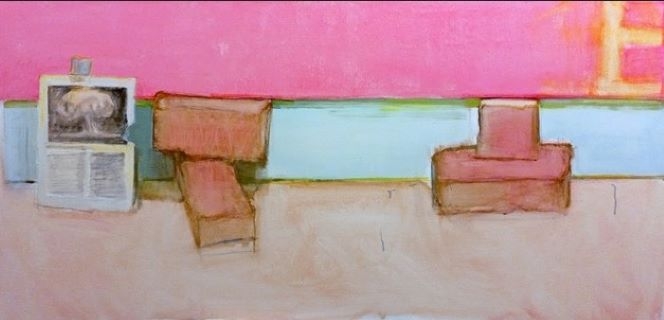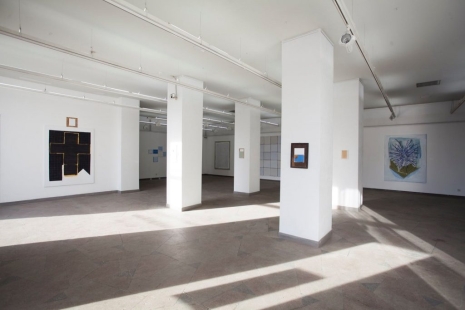Oxymoron (Gr. oksús + mōros – sharp + foolish, blunt) – a figure of speech or description of an object by means of attributes that contradict its usual conception. It is a self-refuting concept, an eclectic combination of words or terms. An oxymoron combines concepts and definitions that are contradictory in their meaning, giving birth to a new semantic quality.
Elena Balsiukaitė-Brazdžiūnienė: “Every time I start a new painting, I have to get into a tricky situation, change strategies, and risk messing up and failing. That’s why one of the strongest aspects of my work is to ignore the rules of the game because they are always outdated and hypocritical. I try to control the situation, to be inside and to observe everything from the outside. It’s a specific kind of inner theatre – where you are the director, the actor and the creator of the space. And sometimes it happens that a work, or maybe a painting, is modelled – the equivalent of a state and a space-time. It (the painting) is at least physically stable. And the characters or motifs are right there – on the table, on the floor, on the screen or in your pocket – everywhere.
The oxymoron as a verbal figure has the potential to become a visual one. It always involves a contradiction: it is like an impossible figure that exists both visually and verbally. Somewhere deep in my inner infinity, I realise that it combines “no” with “yes” and becomes possible. So, the oxymoron is for me a method and a gravitation to the work I have started, and also a trap that I almost always fall into.”
Organiser: Pamėnkalnio Gallery.
Sponsors: Lithuanian Council for Culture, Lithuanian Artists’ Association.
Partners: Meno Parkas Gallery, M. K. Čiurlionis National Museum of Art, Vilnius City.





